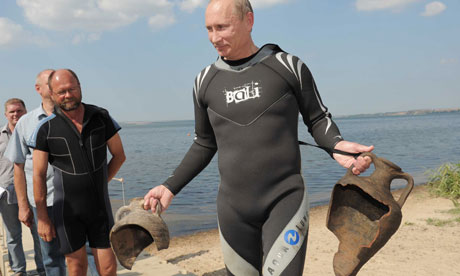Art World
Can Russia Save Crimea’s Archaeological Sites From Looters?


Sarah Cascone

Thanks to Russia’s recent annexation of Crimea, the region’s many important archaeological sites may soon be better protected from looters, reports the Art Newspaper.
According to Mikhail Piotrovsky, the director of St. Petersburg’s State Hermitage Museum, Crimea has been the site of looting and illegal excavations for years. In March, he told the Russian parliament that the region, “unfortunately, is known as one of the places most dear to ‘black archaeologists'” who trade in illicit artifacts.
There is a lucrative, largely unregulated trade in antiquities from Greek, Scythian, Sarmatian, and other ancient civilizations, with weapons, jewels, and other treasures that are hundreds, if not thousands of years old, ripe for the taking.
Pontic Olbia, a former Greek and Roman outpost on the shore of the Black Sea dating to the sixth century BCE, has ostensibly been a protected heritage site since the 1920s, but an estimated 90 percent of the artifacts have been plundered over the years. Phanagoria, now a partially submerged ruin but formerly Greece’s largest city on the Taman Peninsula, has similarly seen much of its archaeological wealth spirited away illegally.
Vladimir Putin’s discovery of two ancient urns during a 2011 scuba diving photo op on the site was dismissed as a publicity stunt by media outlets such as the Guardian, but archaeologist Vladimir Kuznetsov, of the Archaeological Institute of the Russian Academy of Sciences, who has been working at Phanagoria for 40 years, assured TAN that the find was not staged, and that there are still many such treasures to be found there.
Although it is still difficult to prevent looting entirely, it seems that the Russian government has a definite interest in protecting the region’s cultural history. After the annexation, in a speech at the Kremlin, Putin spoke spoke of the symbolic importance of Tauric Chersonese, a fifth century Unesco World Heritage Site where, in the tenth century, Prince Vladimir of Kiev converted to Orthodoxy.
Crimean archaeologists like Valentina Mordvintseva still maintain a healthy skepticism, however. “As for the changes that might come from Crimea [joining] Russia, it’s hard to say,” she told TAN. “Problems aren’t always solved by legislation. The same corrupt law enforcement and government bodies remain in place.”